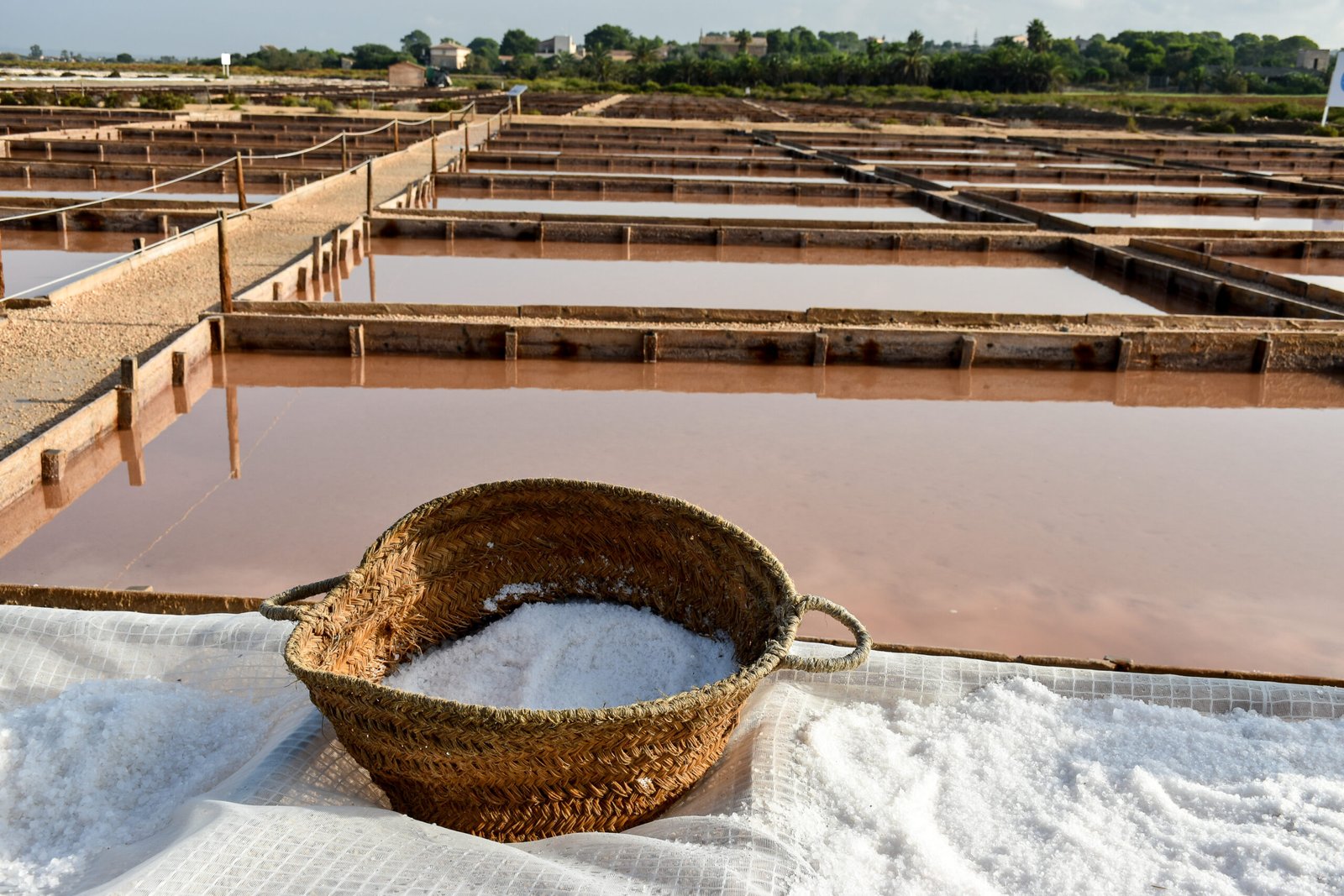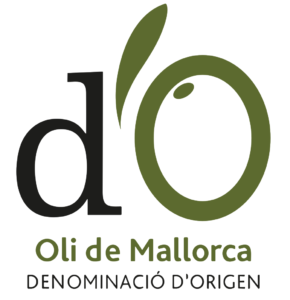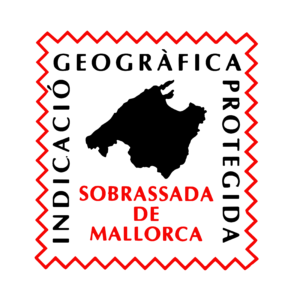Hidden in the blue waters of the Mediterranean that lap the shores of beautiful Mallorca is a white and crystalline treasure that has always been part of the island’s life: the salt of Mallorca.
With the arrival of the Romans, Mallorca’s salt mines, which had been established in the Bronze Age, experienced a heyday. These conquerors of the Mediterranean not only improved production techniques, but also integrated Mallorcan salt into the vast trade network of the Roman Empire. Salt became a precious commodity that was indispensable for preserving food and a symbol of wealth and power.

In the Middle Ages, ownership of these salt mines often passed into the hands of the crown or the church, and salt, an extremely valuable commodity, was used as a means of exchange in the social and economic fabric of the island.
Between the 15th and 19th centuries, Mallorcan salt became a sought-after commodity that was exported across the seas. The fishing industry in particular relied heavily on Mallorcan salt for the preservation of fish.
With the beginning of the industrial revolution and the changes in food preservation methods, the demand for salt for preservation declined. The salt mines of Mallorca, once the beating heart of the island’s economy, faced changing times.
In recent decades, however, a new appreciation for the artisanal, natural and authentic has led to a resurgence in demand for Mallorcan fleur de sel, which has become a star in the global gastronomic firmament.
Did you know that the word “salary” and its translation into many European languages comes from the Latin word salarium, which originally meant “money given to soldiers to buy salt”?
Qualities of Mediterranean salt
Mediterranean salt comes from the waters of the Mediterranean, which are known for their purity and mineral richness. This origin gives it a unique composition and makes it unique in the culinary and nutritional world.
In contrast to conventional table salt, which is often obtained from mine salt, Mediterranean salt retains a greater proportion of natural minerals such as magnesium, calcium and potassium due to its lower processing.
Its processing is generally less intense than that of table salt. This detail not only helps to preserve its minerals, but also gives it a richer and less “salty” taste. In terms of texture and taste, Mediterranean salt can have a great variety, from a fine texture to a thicker and crunchier one. This variety is due to the harvesting and processing method, making it ideal for different culinary uses and offering a different sensory experience.
Newsletter
Let us inspire you with the most authentic Mediterranean! Sign up for our newsletter and immerse yourself every month in the rich traditions and exquisite products of Mallorca!
The 8 best cooking salts in the world
These are the 8 most exquisite salts appreciated by chefs and gourmets. From the delicate Flor de Sal de Mallorca to the intense Himalayan Pink Salt, each offers a unique flavor and texture that will transform any dish.
- Maldon salt (England)
- Fleur de Sel (France)
- Himalayan salt (Pakistan)
- Hawaii salt (Hawaii)
- Salt from Trapani (Italy)
- Flor de Sal (Mallorca, Spain)
- Kosher salt
- Black Himalayan salt (India and Pakistan)

The production and harvesting of Mallorca's Flor de Sal
The production of Flor de Sal is a delicate and artisanal process characterized by respect for the rhythms of nature and tradition.
Production of Flor de Sal
Production begins in the salt pans, which are generally located in coastal areas where seawater is channelled into large shallow ponds or marshes. These sites are carefully selected for their water quality and favorable climatic conditions.
Natural evaporation: The process is based on the natural evaporation of seawater by the sun and wind. This concentrates the salt content of the water in the ponds and salt crystals form on the surface.
Formation of the salt flower: The salt flower forms as a thin, crispy layer on the water surface of the salt ponds. Its formation depends on certain climatic conditions, with an ideal combination of sun and light breeze. This phenomenon usually occurs during the hottest hours of the day and in the driest months of the year.
Harvesting and packaging Flor de Sal
Flor de Sal is harvested by hand, using traditional tools such as rakes and shovels. The salt farmers pick the thin layers of salt very carefully so as not to damage the delicate crystals.
After harvesting, the flower salt is dried in the sun to remove excess moisture. This preserves the light, flaky texture.
Fleur de sel is packaged and sold without being refined or mixed with separating agents in order to preserve its natural and pure state. Due to its dependence on climatic conditions and manual harvesting, fleur de sel is only produced in limited quantities and is considered a gourmet product.
Flor de Sal, harvested using traditional methods, has become the pride of the island, appreciated by chefs and connoisseurs around the world for its unique flavor and superior quality.
The Flor de Sal de Mallorca in fine dining
In the world of salts, Flor de Sal presents itself as a unique protagonist, distinguished from other sea salts by a texture reminiscent of the delicacy of snowflakes and the lightness of the air. Each fine, flaky grain is a whisper compared to the clamor of traditional sea salts.
This subtlety not only enhances dishes with an elegant touch, but also transforms the culinary experience. By gently dissolving over the food, Flor de Sal changes the perception of flavor, allowing the chef to use it in a more measured way without sacrificing the intensity of the seasoning. It is a delicate dance between flavor and texture, where less really does mean more.
Beyond its role in the kitchen, the Flor de Sal takes on a more artistic role as the star of the finished dishes. It is not found among the pots and pans during cooking, but waits patiently by the side, ready for its grand entrance just before the dish leaves the kitchen. Sprinkled on with a deft hand, it adds the finishing touch to a dish, a final touch of flavor that can surprisingly mean a lower overall sodium intake compared to the salt used during the cooking process.
But the story of Flor de Sal does not end with its texture or its use in haute cuisine. It holds a mineral richness in its essence that is like a map of the sea from which it comes. Magnesium, calcium and other minerals are woven into its structure and not only contribute to its unique flavor profile, but also tell the story of its aquatic origins. While these minerals do not significantly reduce the sodium content, they are the silent artists behind its unmistakable taste.

Flamingos in the salt flats of Mallorca
The Flamenco (Phoenicopterus roseus) is one of the most fascinating and visually stunning birds that populate Mallorca’s salt marshes. These birds, with their distinctive pink plumage and elegant posture, add a touch of color and majesty to the salt marsh landscape.
Flamingos are known for their long legs, which allow them to wade in shallow water, and for their long, curved neck. Their pink plumage, which varies in intensity, is the result of their diet, which is rich in carotenoids obtained from organisms such as algae and crustaceans.
Although they do not live permanently on Mallorca, flamingos are frequent visitors. On their migrations, they come to the salt flats in search of feeding and resting places. The salt flats are an ideal habitat for them, as they offer an abundance of food and a safe place to rest.
The presence of flamingos in the salt flats is an indicator of the ecological health of the area. They are sensitive to changes in the environment, so their presence is often a sign of a well-preserved ecosystem. The protection of their habitats is crucial for their conservation.
The elegance and colorfulness of the flamingos make them a great attraction for nature lovers and birdwatchers. Their presence in the salt marshes of Mallorca gives these areas a special value, both from an ecological and tourist point of view.
The ecological value of Mallorca’s salt flats
Mallorca’s salt flats are not only important for their salt production, but also for their remarkable ecological value. These ecosystems are of fundamental importance for several reasons:
The salt pans are rich and diverse habitats that are home to a wide variety of flora and fauna. They are particularly important as feeding and breeding grounds for numerous bird species, including some migratory birds. These areas are important points on migration routes and serve as resting and feeding areas.
Salt flats are unique ecosystems that are home to plant and animal species that are adapted to the high salt content. These species are often endemic and cannot be found anywhere else, making salt flats important for the conservation of unique biodiversity.
These spaces fulfill important ecological functions such as water filtration and flood protection. They act as natural barriers that absorb excess water during rainfall and help prevent erosion.
Conservation of water resources Salt production in the salt pans makes efficient use of seawater, which helps to conserve freshwater resources.
Other articles that might interest you

EVOO with Flavor of Mallorca
Mallorca’s Extra Virgin Olive Oil is a culinary jewel of the island, where tradition and flavor come together in every

Porc Negre de Mallorca, a unique breed for an exceptional gastronomic experience
Porc Negre Mallorquí, the native Mallorcan breed of pig, is fundamental for the elaboration of the famous sobrassada and traditional
Last published articles
Siurells de Mallorca: Living history, artisan tradition and new versions
The siurells of Mallorca: an ancient handmade legacy, where clay comes to life and whispers stories of the island, inviting
EVOO with Flavor of Mallorca
Mallorca’s Extra Virgin Olive Oil is a culinary jewel of the island, where tradition and flavor come together in every









